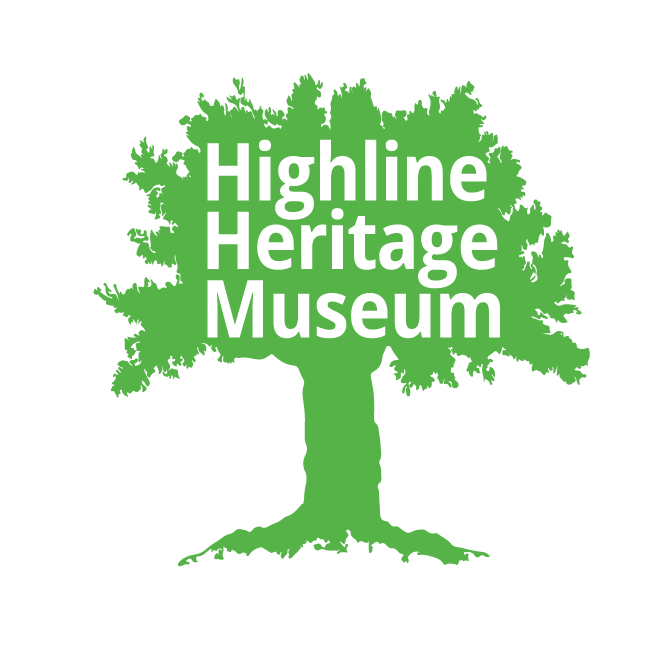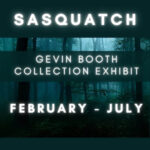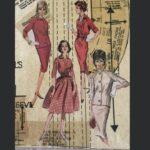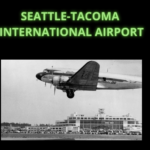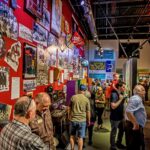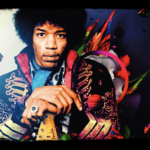Interview with Karen Beeson
2011 April 18
SP: I’m Susan Plecko, a volunteer with the Highline Historical Society. Today is April 18 and I’m here with Karen Beeson to get an oral history. Thank you for doing this Karen.
So tell me a little bit about your family, how you got to Highline, etc.
KB: We moved to Seattle during the war. My stepfather was a long haul truck driver. He carried diesel oil for the military. We located in Boulevard Park exactly one month before the end of the Second World War. The bricks on Des Moines Way were still red and all the memorial elms were still parading grandly up the road.
SP: Where did you move from?
KB: We moved from Wenatchee, via Yakima.
SP: Where did you go to school?
KB: I went to Boulevard Park Elementary School. I went to Puget Sound Jr. High School the second year it was open. It’s all gone now, turned into a park. And Highline High School.
SP: What was your early family life like? What was your house like, things like that?
KB: We had an ordinary house. Fairly large, although they had to open up the attic when my brothers were old enough to need rooms of their own.
SP: How many children were there?
KB: There were three of us. My mother had me already when she married Art. Dicky was born in January of 1945, which caused us to need to move into a bigger house. And Jerry came along in 1950. So we were spread a long way around. We had a large garden on both sides of the house. We grew vegetables. Most of the food we ate was home grown. The vegetables were and a lot of the livestock because we had chickens and rabbits and a cow every year.
SP: How big was the lot?
KB: It was just shy of an acre.
SP: Oh my. So they put good use to it.
KB: There were a lot of kids in the neighborhood and there were a lot of wooded areas. The land across the street from our house was totally wooded and there were several other lots around that hadn’t been developed yet. So we just kind of roamed around like little Indians.
SP: When did you start working for the school district?
KB: My mother started working for the school district shortly after my stepfather was killed in an accident. She worked there for a couple of years. By that time I was married and had two children. My husband was out of work and we needed some income. So I was able to go to work for the school district in her office during the summer. Apparently it worked out well enough that I went on full time duty at Highline High School as the library clerk for the year of ’60 and ’61. Then that summer I was involved in an accident and unable to go back to work. By the time I was able, there were no available jobs in the school district. So I waited tables for ten years.
SP: Where at?
KB: All over Seattle. Doghouse for one. I was at the Doghouse for three years. Then the Five Point Cafe on 5th and Denny, just after the World’s Fair closed. It was an exciting time to be downtown. I was divorced and I lived downtown.
When I came back out to the Burien area in 1968 I had with me one daughter. I needed a place to live, so Momma said, “Well come and stay with me. You can take care of the house and cook for Dick and Jerry and me.” I’d done that for two days when she called and said they needed someone to rewind films at the school district. Since I had experience doing that, I went to work and I worked for the district for another 30 years.
That substitute job rewinding film developed into a media technician at Project Early Warning, which was a Federal program that the school district operated. Then that closed. I went into Puget Sound Junior High as the library clerk because I had some experience doing that. That was under the Federal program that President Nixon started – the PEP, Public Employment Program. The stipulation there was that a certain percentage of the people who were hired under that needed to be put into full-time jobs by the employer within a specific period of time. When the job at McMicken Heights Elementary School opened, I applied for it and got the job. I was there for 14 years.
SP: In the library?
KB: No, no. I was the school secretary at McMicken. And just absolutely loved it. I was a big fish in a little pond. It was my domain. But in 1987 a principal came in and we didn’t get along. So I applied for a job in the administration building and I was there for another 11 years, in all kinds of things, from secretary to the district negotiator, to working in the human relations office, to student placement all by myself. Ultimately I became the recording secretary to the school board in addition to the duties I had in human resources. Then I retired in 2001.
SP: How long was your mom with the schools?
KB: Mom retired in 1970, I believe. She had about 13 years in. She was on Social Security by that time and she was losing money. So she retired. During all that time, I kept trying to get her involved in things after she retired. I saw an ad in something that came in the district that they were having a meeting to discuss having a school museum at Sunnydale. Since Mom’s former boss was on that committee, I thought it was, Cracker Jacks. So we went to that meeting and we were in it up to our teeth from then on. Mom became the district curator for the Highline School District Museum at Sunnydale. I served as secretary to the board. It was Gene Friese, and Kathy Hand, and Mom and I and Rowena Cheney, who was Mom’s second in command in running the museum, They just put together a glorious school district museum, Highline School District Museum, and is the basis for the school’s collection that is currently cared for by the Highline Historical Society. When the district decided that they needed to reopen Sunnydale Elementary as a school, we got bumped around a lot and wound up in the gym at Lakeview which was kind of grim and dismal. About the time that Rowena was really getting too old to maintain the whole thing by herself, and I was getting a little tired of helping, I went into Sal’s Deli for lunch one day and a woman came in and they were chatting away and Jim said, “Well, that’s somebody you should know.” He introduced me to Cyndi Upthegrove. From then on it’s been Cyndi’s historical society and I’ve been very happy about that. I continued to serve on the board for a few years after that. By then I’d met Vince. He was retired and I was retired and we wanted to travel. I didn’t want to be tied down with all that stuff. So, there you go.
SP: Tell me more about your life growing up and Boulevard Park, etc.
KB: When we moved to Boulevard Park there were two grocery stores, Mansfield’s and The Bungalow across the street from it. There was a Shell gas station and a drug store and a dime store. We watched it grow into a thriving community with a large supermarket, Mansfield’s built their supermarket across the street. It’s still there.
SP: What was your address, do you recall?
KB: We were at 11703 14th Avenue South.
SP: How did you get to school?
KB: I walked most of the time. There was a bus, but to take the bus we had to walk down 14th to the community center. Southern Heights field house, is what it was. It was a former Highline school that had been phased out when Boulevard Park was built and they turned it into a King County playground like the ones at Des Moines and White Center. The walk down there and then waiting for the bus, it was easier to just walk. I loved my walk to school because I walked pretty much by myself until about 6th grade when a girlfriend walked with me. I walked through the woods and I dilly dallied around and my imagination made up stories. I just really enjoyed it. I walked through the woods and down 12th, across the firehouse. There were two grocery stores on either side of the street at 128th and Des Moines Way. They both sold penny candy.
SP: I remember penny candy, very dearly.
KB: Most of my bank money went into the penny candy. There were those two grocery stores and there was a little cafe on one corner. I watched the growth in that area, and then the deterioration, because it really has declined.
SP: Mainly because of the airport, do you think?
KB: Uh huh. Definitely. And southern expansion in the ethnic communities has made great changes. So, it’s a different place now.
When Mom died in 1990 I remodeled the house and moved back into it for three years. But the yard was just too big for me to take care of so I sold it and bought a condo.
SP: And no more chickens and …
KB: Well, no I didn’t have chickens, but I had a lot of lawn to mow. It was either pay somebody to do it or mow it myself. About that time I was diagnosed with COPD and that made it pretty difficult to mow a large lawn and do the upkeep for the house. I sold it and I was sorry. And it has also declined and deteriorated. I drive by all the time. It’s sad to go through the old neighborhood and remember how it used to be. Fruit trees were in bloom. Oh it will definitely change again, it’s that kind of community. We had cherry trees on all four corners of the property. They were in bloom at this time of year. Apple trees and peach trees.
SP: Can you tell me some information about working at the school district – some stories.
KB: It was fun to go back to Highline High School because, had I not quit school to get married, I would have graduated with the class of 1957 and I went back to work there in the class of ’60-’61 so most of the teachers were still there. It was a really interesting year. I worked with the crusty old librarian that we made fun of and told stories about and I learned to love her dearly. Her name was Claudia Nichols.
I missed being at the schools when I was waiting tables and working restaurants. Although I really enjoyed that too.
When I went back at Project Early Warning I was a media technician. Which means that since it was a set, they had an experimental classroom in the building and they also did field work at Boulevard Park and I think at Beverly Park School too. The teachers picked particular students that would benefit from specific learning technique. Then the teachers who were on staff with Project Early Warning worked with the teachers in the classroom, either in the experimental classroom or in their own. I had this humongous big Ampex video recorder. I had never had any experience with any of that stuff before. I was not self taught, the people in the district taught me to use it. It was mind boggling for somebody who had no real experience with that kind of education and to be around such learned people. It advanced my intellect tremendously just to work with them.
SP: The Ampex and video recorder. I just read in the paper the other day, 1956 was the year that Daddy Ampex introduced it.
KB: Well, this would have been ’69 and ’70 and ’71. It was still a very big piece of equipment to roll around
SP: So you would tape the teachers?
KB: I would tape the teachers as they were teaching Then they would have a chance to review their own work. It was interesting. The funds ran out and the program died but I think there are parts of it that are probably still in use. I know that Maryann Woodward who taught at Boulevard Park was using a machine, a teaching reading machine. They were using that with the project too. Those stayed in the district for a long time. I found one in a closet at McMicken when I went there a few years later.
SP: Are the tapes part of the school collection, historical.
KB: I don’t know if there are any. Maryann Woodward is still alive and she probably has one. So I could probably get some for the museum. I hadn’t thought about that.
In the elementary school, every day was a story. When I went to work there, I worked for the last two years of Rosella Roff’s career in the district, which was monumental. She was one of the first female principals in the area. She went to McMicken as it was being built, as a head teacher and then advanced into the principalship. She was a force to be reckoned with. She ran a tight ship. The things I learned from her about how a school should be run and how teachers should be managed and those things were part of the reason I left when the principal that I mentioned before came in. I won’t give you his name. Through the time I was there I had a total of five different principals to work with. Rick Valentine followed Rosella. He had been a teacher there. He was there for like five years I think. Marvin Mayhle was there, and I loved Marvin. He was only there for three. Then a new young guy named Jay Hambly came in and he had never been a principal before he came from Shoreline. We trained him up so well that he’s become the superintendant out in Buckley, out in that area. He was superintendant after he left us and went to Valley View and a couple of other schools. I was really sorry to leave McMicken. I had some really good friends there. But, that’s the way it goes.
I moved on to the administration building. It was also quite an experience. I was up in the superintendant’s area. There is nothing like knowing how a school district is run. It was quite an opportunity to get to know the people that made things happen.
SP: And you did work with your mom at the collections?
KB: I worked with my mom at the collections on weekends when we’d have an open house. I would put on the schoolmarm outfit and work as a docent. Mom worked there sometimes eight hours a day, five days a week. She just logged a lot of volunteer time. She was there from 19?? until just before she died.
SP: And she died in 1990?
KB: She died in 1990. She was diagnosed with lung cancer in June. She had been running downhill and I’d been concerned that her memory was really getting bad. So they did enough testing to determine that it had been there long enough to metastasize to her brain. At that point they gave us six months. She was gone in less than 6 weeks. It was a blessing, it really was. She didn’t suffer. By the time we knew how ill she was, she was too ill to know how ill she was. That was a blessing because she was so sharp until then.
When I went back to work for the district, when they called me back the day that I went back to rewind films, Mom had been in the learning resources department longer than anybody else that was there at that time. That was the lower building, if you’re familiar with the administration building at all. The lower building was at one time the Target Ballroom where all the teenagers went to dance. The district moved in there and put in the learning resources department. At that time they had coordinators for all of the subject areas. They had math coordinators, and language arts coordinators. They were all in the learning resources building. Then they began building after a few years, had a bond issue I suppose, the administration building portion of it. But it used to be just one little building.
When I went in if there was a question asked about anything, they would say. “Ask Carla, she knows.”
I was there the day that, it was during the time that they landed on the moon, they touched down in the ocean. There was a large meeting, conference room right behind Mom’s desk. There was a big conference table in the middle of it and there was a television set hanging on the wall. That’s where we watched the astronauts get back to earth. I think we’re celebrating an anniversary of that now.
SP: Right, that was major.
KB: Yes, it was huge. A lot of time spent in that building. Over the years Mom became the chairman of the negotiating committee for the secretaries association.
SP: Your Mom’s name was . . .
KB: My Mom was Carla St. John. Proudly, my mother’s name was Carla St. John and I loved her dearly. We became best friends. We bonded so much over those years because she became chairman of the negotiating committee and somehow or other I got duped into becoming president of the association, and also a member of the committee. From that we both became active with the state Public School Employees Association and served on the board for them for five years. I had to leave because I took a position in the administration building and that knocked me out. So then I became active in the Washington Association of Educational Office Professionals, way up, and was a state board president of that for one year. I’m still active as part of the past presidents organization and headed to the conference at the end of this month. So I’m still keeping my hand in what’s going on. I wish I could volunteer over at the museum but every time I go in the dust gets me. I guess I still have some of the asthmatic component of the COPD, even though I had a double lung transplant. None of that disease has remained. But I know every time I go over there the dust gets me.
SP: Building the museum will be a good thing.
KB: Yes, I’m looking forward to that tremendously. I have tried transcribing the oral histories. They’re done on cassette tape. I’ve done several. I’ve been working on Dick Dahlgard’s now for a couple of years. He died just as I was finishing it up. There were so many questions that I was going to go ask him to finish up his oral history. And I haven’t been able to get back to it.
SP: I understand.
KB: He was a dear friend.
SP: He took one of my passport photos.
KB: Oh did he? He probably took my passport photos. He did. When we went to China he took my passport photo.
SP: What is one of your favorite Burien stories? Or some of the stories, IF you can tell.
KB: (Laughing) I was a wild child. When I was a kid there were two theaters in the area, There was Coy’s Highline Theater which was a quonset hut there by the Wah Ku Restaurant on First Avenue and there was the Den Theater in Burien. I think there’s a Thai restaurant there now on the corner of Ambaum and 153rd. Beside it was Paulson’s Pool Hall. We used to love to go into Paulson’s Pool Hall because their jukebox had the best music. It was the early rock and roll era. They had songs on there . . . but the girls weren’t supposed to go in there. We spent a lot of time at Coy’s Theater and at Dave’s Place, I’m not sure it was Dave’s Place, but it was Dave’s restaurant also on First Avenue kind of catty-corner from Highline Theater. They had the first “broasted” chicken, which was like Kentucky Fried only it was the first deep fried chicken.
SP: Coy’s was over by Burien Bark, what’s Burien Bark.
KB: Yes, it was just to the south of where the bark place is. Old man Coy was quite a character. He also had Coy’s White Center. Vince worked for him at Coy’s White Center, making popcorn. He tells horrible stories. They made the popcorn in the basement of the White Center theater and then they trucked it in big bags over to Coy’s Highline. It sometimes was pretty old. (Laughing). But we didn’t know that. We ate a lot of it. We went to the movies and of course teenagers don’t watch many movies. (Laughing)
SP: I never did see all of Exodus.
KB: One night I was there and there was a group of kids around me that were being distracting, I imagine I was chipping in but certainly wasn’t the catalyst. But Mr. Coy came up behind me and grabbed me by my shoulders, shook me. I turned around and mouthed off at him, and he called the police. So the sheriff took me home.
SP: Oh, no.
KB: My poor mother, opened the door and there I was.
SP: About how old were you?
KB: I was probably 14 at that time. I’d gone with a group. Went home by myself (Laughing).
SP: In a police car.
KB: In a police car.
Highline High School, I was there in body but I don’t think my brain ever attended class. Except we had one called World Relations. It was the classroom where they put the kids that weren’t doing well in anything else. I can’t remember the name of the teacher but we dearly loved him and it was a great class. There was so much thought that went on, actual conversation, discussing what was going on in the world. It was tremendously interesting. It’s the one I remember better than any other. Although I was in journalism, I served on the “Highlines” for a year.
I know that my typing teacher didn’t like me chewing gum, and I couldn’t seem to type without chewing gum. So we were at constant odds. Her name was Mildred Gibson. She told me that I would never make a living as a typist. Five years later I was in the library making a living as a typist. (Laughing)
SP: How did you get interested in the schools and the history of the schools?
KB: History has always been a “thing” in our family. My grandmother, God bless her heart, has kept family records that aided in doing my family tree. Mother also, obviously had that interest and when the opportunity arrived we jumped into it with both feet. Even prior to that historical fiction has always been my special favorite and Mom’s too. We were aware of things like the memorial elms and the bricks when they got asphalted over.
Coincidentally, the gentleman, Judd Colburn who was known as the “keeper of the trees” for so many years was the grandfather of the girl that my brother married. So we kind of felt like there was a connection there and especially after Judd and Laura passed away. Judd passed all of the stuff on to the museum because Mom was there.
We just always had a connection. We became so interested in the history of the early schools and how Southern Heights and Riverton Heights became Boulevard Park School and where some of the old ones that are gone now, the original Midway became another Midway later on. Just lots of questions and we answered them as we went along in the museum. We got stumbled on Esther Balzarini’s recorded . . .
SP: “All Roads Lead to Highline”
KB: No that was Melba Eyler. She published the book and Melba made some errors in that. Esther’s is pretty right on.
SP: “My Burien”
KB: “My Burien”, that’s what it is. Mrs. Kelly’s recount of Mike Kelly’s stumbling into Burien and what it was like in the early days. Then reading his stories of the pioneers and driving around finding the locations of everything. For some time Sunset Jr. High had all the county archives. So Mom was going in to the archives and finding the original pictures of the properties that we were learning about and incorporating them into the archives, our museum archives. Doing that, we looked up our house and we found the original Kelly property. It’s where the Little League field is just behind the Sunnydale Tavern, which has been there forever.
One of my childhood memories is swimming in the little lake that you don’t see any more that’s up the road that used to sit right beside the road. Daddy and Carl Johanson would drop the neighborhood kids off and we’d play in that little humus lake while the daddies went up to the tavern and come back and pick us up when they were ready to go home.
I can remember when I saw the first picture of the Kelly house after they had added on significantly to the original cabin, but before they left and moved down to South Park. I remember it on the hill right behind that little pond only because I saw the picture and that brought the memory back.
It’s just been so fascinating to learn about who was here before and how things got the way they are. Trying to perpetuate that so there is some appreciation for things like the memorial drive. Mom and Rowena spent so much time in that four rooms on the second floor of Sunnydale and it was such a perfect school museum. There were people who came from far away who said it was the best. I can’t remember who the expert was that toured the museum that said it was the best school museum, actual classroom representation that he had seen west of the Mississippi. So they were justly proud of what they did with that room. They discovered that the green covering on the blackboards was just put over the original slate. So they had the district workers come out and take the green off and so they had the original slate blackboards. The classroom that was set up was adjacent to a room that was used as the principal’s office and the secretary’s office so that it was the entire school domain. You went into the secretary’s office and through the principal’s office and into the classroom. There was the rows of the student’s and the teacher’s desk and the little model teacher sitting at her desk, old books.
SP: How long was that set up?
KB: That must have been four years, five years? I’d have to go back and look at the records, but it was quite a while. Then we also had what we called Mrs. Kelly’s kitchen, which was a representation of a pioneer cabin. Louis Barei was a principal in the district and his family were pioneers down in the Renton area. He had an old stove from that era that he put on loan and I think it’s still in the archives. There were just a lot of people who contributed. When Mom and Rowena would come in in the morning or come back from lunch they’d find boxes there with no description on them at all. So there were some donations that they never knew exactly where they came from. But Rowena would go through every single item and document what it was and give the documentation to Mom. Mom would type the catalog cards and describe it as best she could and kept a perfectly complete library archive.
SP: So where did she learn to do this?
KB: Working for the school district. That was her job in learning resources. She catalogued all of the instructional resources that were used in the district. She ordered them, catalogued them. It was during the time NDEA, National Defense Education Act, just poured tons of money into the school districts. For science and math, particularly. So they used a lot of that money on instructional resources. Bea Warfield was her boss and of course anything Mom did was with Bea’s approval. But Mom did it, she kept the books on it, catalogued it.
SP: So she was a natural for the museum.
KB: Yes, she was. She was a natural for the museum and with her love of history it just all came together. And I fell right in behind her. Of course I was still working at the time, had kids at home. Not as much time to devote to it as I’d have liked to have. But I was there on weekends and as often as I could when there was a work party or something going on. We had monthly meetings in the museum. The minutes of those meetings are in the archives over there in the current location. I can hardly wait to get all that stuff into the “new” museum where I can actually access it again. I can now, but it’s dusty.
SP: Right. And the archives are cramped.
KB: Yeah, they are. But I feel like they’re mine (laughing). That’s the way it goes.
SP: Where is your family from originally, before Wenatchee? How long has your family been here.
KB: Mom’s family came from Illinois. Wheaton, Naperville, Warrenville. My dad’s family came from Minnesota, Grandma from Little Falls and Grandpa from Ashby. They met in Fergus Falls. They emigrated to Wenatchee as my mother’s family did. They grew up in the same town. I think they didn’t meet until my dad and my mother’s brother were in the same National Guard outfit. Then they all became chums and Mom and Dad got married. I was born five years later and a year after that they got divorced. Mom moved to Yakima. She worked for Consolidated Freightways and she met my stepfather. He went to work subsequently for Lee & Eastes because of the war and was hauling diesel oil back and forth. We moved to Seattle in the cab of a Lee & Eastes tanker. Lived in the Morrison Motel for a couple of weeks. Then we moved into a literal tenement on Lane Street for a couple of months because housing was almost impossible during the war years. We found a little house out on 144th in Tukwila and lived there for about a year and a half, if my memory of time is right. Then we moved to Boulevard Park in July of 1945.
SP: May I ask how old you were?
KB: I was six. I started school at Boulevard Park that fall. I remember the day the war ended. We were walking down Glendale Way. It was asphalt and it was a very hot day. It was oozing tar, it bubbled. Just as we hit the intersection with Des Moines Way, the sirens went off. There was just noise everywhere.
SP: Did you think it was an air raid?
KB: NO, no, no. We knew what it was. Even at six years old, we knew what that was. And life changed.
SP: And a lot of people, during the war, had victory gardens and . .
KB: Well, we continued ours.
SP: And people worked together back then.
KB: The houses started being build around. There were new neighborhoods springing up all over everywhere. It was just a time of growth and change.
SP: I’m always surprised at how the people that grew up in Highline and Burien want to stay there.
KB: Or come back.
SP: Or come back. What brought you back?
KB: Well, I moved back in with my mother and I stayed there for the most part until I met Vince and he had this house in West Seattle. So I’ve been here for 11 years now.
SP: People and each succeeding generation want to go back.
KB: They go back. It’s true. I know his grandchildren are attending Highline, one graduated from Highline last year and the grandson is there now. When I go to school programs, I recognize names in the student body. The names have changed, there are a lot more very different names. A lot of ethnicities there now. When I attended Highline we had I think two Japanese children, and two African American students and that was the extent of it. Now it’s like a rainbow, which is a good thing.
SP: So tell me more about your neighborhood where you grew up.
KB: It was all residential. There were children scattered about of various ages from high school to kindergarten. Right around me there were at least six of us that were all within a general age. And when I spoke earlier about marauding Indians, we just kind of roamed around. We went anywhere we wanted to. In those days, nobody was concerned about that. Mom knew that we knew when dinnertime was. If she thought we were within calling distance she’d yell.
SP: Did you have streetlights?
KB: No.
SP: When the streetlights came on we had to go home.
KB: No, we had no streetlights. The roads weren’t even mostly paved, they were just oiled.
The Southern Heights field house was about three blocks down from us and across the street from that was the Glendale Golf Course, which is now Glen Acres. The Glendale Golf Course and the Rainier Golf Course were so very different. The Rainier Golf Course, we never dared put a little toe over the fence because the guards were on duty all the time. But the Glendale Golf Course, we kind of got to just sort of roam around. In the winter time we actually took our sleds in there and sledded on the slopes. It had a funny feature on one side of it that I never got explained because nobody knew. There were stables, old worn out, rundown stables in a wooded patch on one corner of that golf course.
I also must tell you about our next door neighbor. Her name was Maude Simpson. We called her “Granny”, was in her 80’s, I think, when we moved there. I’m sure she lived to be 100. Her house was so old that it kind of leaned and it was gray. She’d been there for many, many, many years. Her daughter Alice lived in a tidy little house way at the other end of the property and it was the whole block from 14th to what would have been 15th if there had been a street that went through. Alice was a reporter for the Highline Times and South Town Reporter. She also had severe rheumatic arthritis. Granny had been a circuit riding school teacher in her younger days. She had been in Boulevard Park forever, from the age of her house. She kept the garden, ran the full length of her house to Alice’s. She kept chickens. She was a force to be reckoned with. She was a community leader. She was part of the Wednesday study club, which was the ladies of renown in the Boulevard Park area. They were the guiding influence in the library being established. She was so old that her teeth had started to grow again. She still had such perfect teeth and they started to grow again. In about 1959, her house caught fire and burned. Fortunately a young man from across the street saw it in time to get in and get her out because it went up like a tinderbox. We completely lost track of her from there. Her name was Maude Simpson, but she was related somehow or other to the Aries who were also in the neighborhood and had been there for a long, long time. There is history when you’re growing up that you just don’t take advantage of learning about. Granny’s brother was the outlaw who was hung in Colorado who was reputed to have been the guy who caught the Apache chief. Anyway, she just had such stories to tell. She’d come over and yell when the kids were up in the trees making too much noise. She didn’t approve of a lot of things that children were doing in those days and she let us know. But she’d bring us chicken gizzards, fried chicken gizzards. I’m so sorry that I lost track of her and I never found any part of her history but I know somewhere, someone in the Burien area knows more about her.
SP: Aries, how …
KB: Aries, and her name was Maude Simpson.
SP: How do you spell Aries?
KB: A-r-i-e-s. I know that there are still Aries in the area. The house was occupied at that time by Joe and his sister. They were strange. Neither had ever married. We played in their field a lot. But Mom was always concerned that we stay away from Joe a little bit. I think she was a little concerned with that. Sometimes he was strange enough that we didn’t need to be told. His sister lived for years and years and years after. She was still walking from Boulevard Park up the hill to her house every day well until Mom died. And she was really old by that time. She was still making that walk. I should remember her name.
Anyway that was our neighborhood. We just kind of palled around together and got into trouble. Went down to the field house and roller skated on the old roller skates you have to clamp on. Then when King County took it over they had swings and they made it a nicer place.
SP: But, you didn’t have to use your imagination as much.
KB: At one point for some reason or other they rolled up an old sewer pipe onto the playground. It was just an empty, big long sewer pipe. And that became our favorite place to go. We were pre-adolescent by that time and we would sit in the pipe and talk, I guess, and tell stories, and be kids. I imagine we probably tried a cigarette or two while we were in there. (Laughing)
SP: They were easier to get.
KB: Yeah, they were. Rock and Roll was just beginning to rear its ugly head about the time I started paying attention to music. The years I went to Puget Sound when I was in the ninth grade, I walked to Puget every single day from home and I sang to myself all the way with every single top 20 record that was on the radio. And I can sing them to this day.
SP: Were you an Elvis fan?
KB: I was an Elvis fan. I got down on the floor and pounded when he came out with “Blue Suede Shoes” because that was so emotional.
SP: Did your school have sock hops?
KB: Definitely, sock hops. I wasn’t much of a dancer though. I was more of a hanger arounder.
SP: Where did you meet your husband?
KB: Which one?
SP: The first one. Was it from school?
KB: No, through mutual friends. There was a bakery in Boulevard Park, it was a regular hangout. We hung out there.
SP: I’m a big fan of bakeries. Back east we had real ethnicky.
KB: It was just a bakery. I guess they baked bread and sold bread items, but they also had a lunch counter and a jukebox. So that was the draw.
SP: Cherry cokes?
KB: Yeah, cherry cokes, lemon cokes, graveyards. My first job was as a soda jerk at the Queen City Pharmacy in Freemont.
SP: Lemon coke and what?
KB: Graveyards.
SP: What are graveyard?
KB: A graveyard was where you poured everything in it. Chocolate, cherry, lemon-lime. They were real popular.
SP: And for like a dime or 15 cents.
KB: Oh yeah.
SP: So do you think that, was it Sea Tac that really changed the area?
KB: Oh my goodness, yes, It was Bow Lake Airport when I was a kid. The airplanes had really just started flying over. I remember we used to run out on the front porch and look when the first jets went over. It was just amazing. Then it got to the point where we blamed them on knocking out the television set because they went over so close overhead that we could practically shake hands with the pilot. 14th IS the second runway. There was a study done by somebody, I don’t know whatever happened to it, about the health effects of the airport and living near the airport. I threw Mother’s lung cancer in there.
SP: I wouldn’t be surprised. Anything else you would like to . . .
KB: No, I just am grateful for this opportunity. I consider being part of the archives of the Highline Historical Society.
